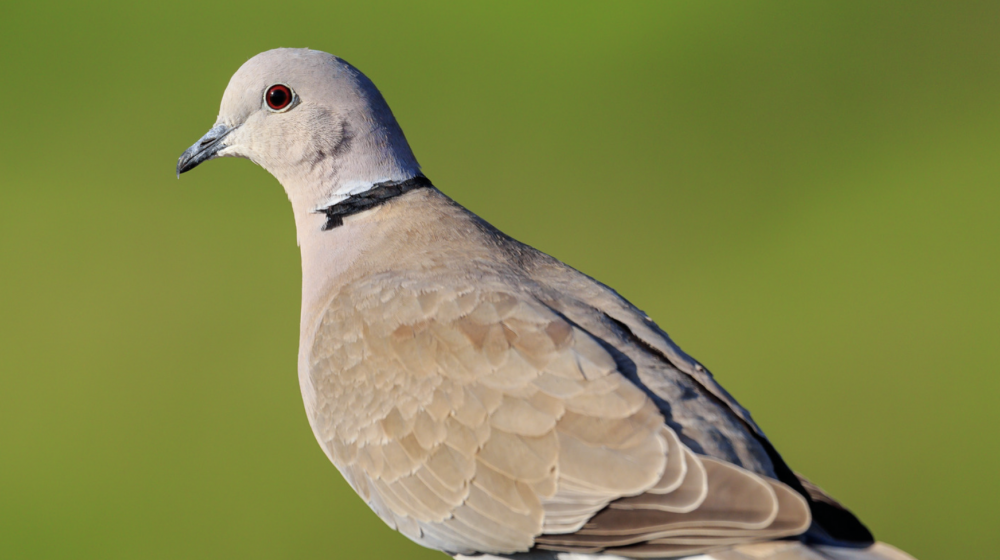Bird of the Month: Eurasian Collared Dove

An easy way to tell the Eurasian collared dove from a mourning dove is by the black collar on their neck. (Photo from Canva Pro)
We’ve reached the end of our yearlong series that introduced you to some of Mississippi’s birds! We hope these blog posts have helped you identify and learn more about our feathered friends. Last, but certainly not least, we’re going to learn about the Eurasian collared dove!
Doves are very common birds in Mississippi. If you recall, the mourning dove was featured back in June! How can you tell the difference between the two? Eurasian collared doves have a black collar around their necks, while mourning doves do not. They also appear to be grayer in overall appearance and are generally larger than their counterparts.
Eurasian collared doves are not native to the U.S. They originated in the Middle East then spread across Europe. In the 1970s, they accidentally escaped from an exotic pet shop in the Bahamas. By the 1980s, they’d found their way to the Florida mainland. They are now common in much of the U.S. Many scientists are concerned they will eventually displace the native mourning doves due to their rapid spread.
They are commonly found in open areas, especially in the suburbs, where food is easily accessible. Their diet consists of mainly seeds, but they are also known for snacking on berries and insects. If you have bird feeders out, they’ll pay your house a visit!
Eurasian collared doves typically only lay one or two eggs at a time. They are unique in that males and females take turns incubating their eggs! Most birds feed their young similar items to what they eat themselves. Eurasian collared doves, on the other hand, feed their young “pigeon milk,” a substance that comes from their throats.
Our EkoKids: Schoolyard Nature Guides highlight many other mammals, reptiles, fish, and invertebrates! It’s a great way for kids and adults to learn about Mississippi’s common backyard wildlife!
Subscribe to Extension for Real Life
Fill in the information below to receive a weekly update of our blog posts.









